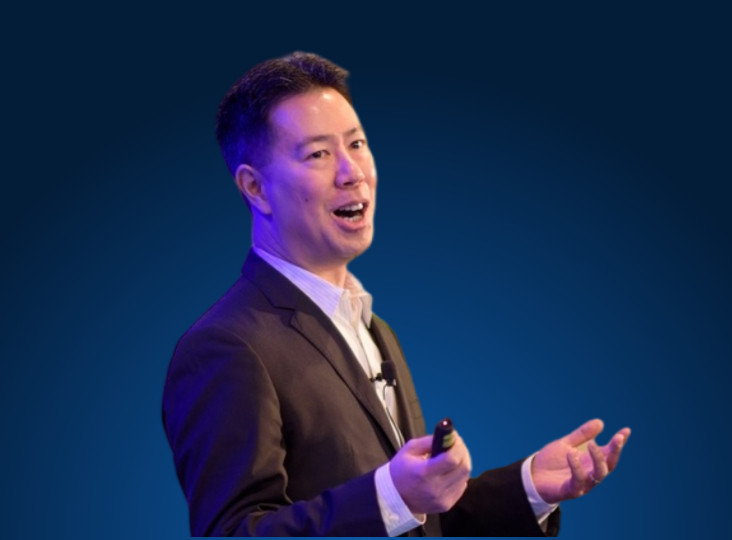Brand expert Bert Miklosi talks about 2022 competitive healthcare trends on Patient No Longer podcast
NRC Health’s Patient No Longer podcast, which creates connections to drive organizational change, innovative strategies, and digital technologies, takes you inside the minds of healthcare leaders and innovators who are inspiring a positive shift in the customer experience.
Recently, Host Ryan Donohue spoke with brand expert Bert Miklosi for two episodes about 2022 trends that healthcare leaders should take notice of.
Miklosi on consumerism: What is happening in e-commerce for the early adopters is now mainstream. How could the healthcare sector adapt and adopt some of that learning?
From a digital point of view, everything is performance-based, and obviously, that’s the most important metric. Looking at healthcare from an e-commerce point of view, you need to migrate from a transactional relationship to a brand relationship. Because if it’s transactional, you can go to the fastest, cheapest provider, whatever the case may be. As the saying goes, “You only get what you pay for.”
The whole idea might be a bit more expensive, but it’s well-branded or more valued. That’s important. So this whole idea of the rebirth of a brand is beyond that metric of transactional performance; it’s brand loyalty. And that’s a critical component, particularly when digital is forefront in all our lives.
Miklosi on automation: Automation is happening everywhere, from a consumerism point of view—and healthcare is no different.
Healthcare needs to be able to accept automation. And adapt it. And grasp it. And welcome it. And it could be highly efficient—everything from having digital assistants to making an appointment to see the doctor. The appointment could be either physical or virtual. You could get alerts saying it’s time for your annual physical or your six-month checkup, or whatever the case may be.
Automation could send you an instant email saying, “This is when your appointment needs to be.” And by the way, part of that appointment—again, just getting your basic statistics in terms of weight, height, blood pressure, etc.—that could be done virtually. That can be done in an automated fashion through a digital assistant. That type of idea versus having to physically go into a doctor’s office 20 minutes early to get those things from a healthcare perspective is quite rudimentary and easy to monitor and use. Maybe automation has your health information with a healthcare provider or nurse done virtually, via a tablet or website.
You can do half your physical online and not come into a physical space. That’s an example of hybrid automation that breeds efficiency. And it also helps in terms of alleviating some of the bottlenecks that are happening right now in the healthcare sector.
Miklosi on consolidation: Healthcare is a complex sector, but consolidation could help merge strengths rather than build up weaknesses.
Having efficiencies and various points of view come together and bringing in the strengths of the various healthcare sectors is a good idea. A healthcare system might be strong in one area but weak in another. Then you consolidate with those two strengths to bring it together, versus trying to build it and construct it on your own, which takes a long time to do and is expensive. That’s the way consolidation is going to happen.
You can look at what’s happening in other sectors. “Bigger is better” is happening. You see that in the tech sector with Amazon, Facebook, and Google. That’s going to continue to happen in healthcare, because you need to have that muscle and financial strength and the capacity to do these types of things better.
Miklosi on TikTok: Two years ago, TikTok was niche, and the only people who knew about it were 13-year-old girls. That’s no longer the case. TikTok is becoming mainstream, and health systems should take notice.
The NFL has signed a multi-year contract with TikTok, because they wanted to get a younger crowd watching football games. And guess where you get them? You get them on TikTok.
In my opinion, there’s a huge upside opportunity in terms of getting back the brand relationship. How many healthcare systems are on TikTok? Probably not a lot. But the whole idea is, if you want someone who is maybe not a Gen-Zer, but someone older who is maybe trying to have a child, and they want information, they’re a TikTok user. And again, now it’s transcending ages. TikTok is doing brand advertising on conventional television.
So talk about full circle! Because it’s fully integrated. TikTok is using TV ads. Who watches TV ads? People under the age of 25? Not necessarily, but they’re running it because they want to expand who uses TikTok, and marketers do that. If it sounds crazy that I’m saying a healthcare system should be using TikTok, it’s not that crazy, because it’s cutting across all sorts of segments.
Think of brands like Walmart, which you don’t always think of as a ”cool chic brand” for the Gen Z crowd. But they’re doing it—they’re getting in with TikTok or using influencers. To me, using TikTok would bode well for health systems. Sometimes health systems say, “Well, what are we doing on TikTok?” Or, years ago, it was, “Well, why do we need a Facebook page? We’re not a person!” And yet we know that people have relationships in social media with brands, as much as or sometimes more than they do with real people. Those relationships can matter.
Watch Episode 1: Clarity in Chaos as Healthcare Pushes Ahead
Watch Episode 2: Themes, Trends, and even TikTok for Healthcare


